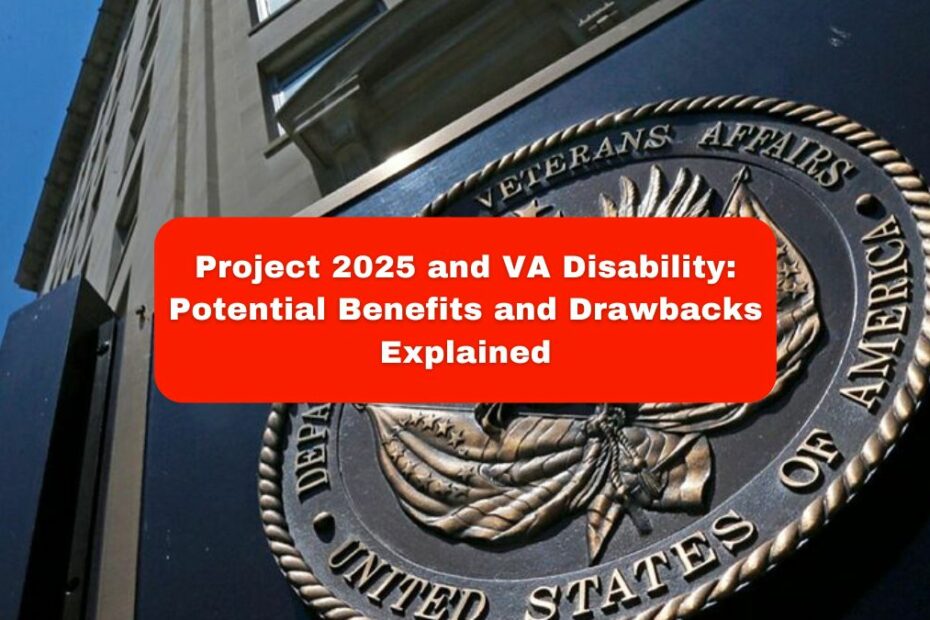Project 2025 is an initiative introduced by The Heritage Foundation, aiming to reshape various federal agencies, including the Department of Veterans Affairs (VA). This project focuses on privatization, reducing government spending, and changing how veterans’ benefits are managed. This article explains what Project 2025 involves, its potential benefits and drawbacks, and how it might affect VA disability benefits.
What is Project 2025?
Project 2025 is part of a larger strategy to align U.S. public policy with conservative principles. It proposes significant changes to the VA, which provides services and benefits to millions of veterans. Key proposals include expanding privatization in healthcare services, tightening eligibility criteria for benefits, and shifting employment from career civil servants to political appointees.
VA’s Current Situation
The VA manages a large budget and serves millions of veterans. Here’s an overview:
| Aspect | Details |
|---|---|
| Budget | Over $200 billion |
| Facilities | 1,255 (including 170 VA Medical Centers and 1,074 outpatient sites) |
| Disability Claims | 1.3 million processed in fiscal year 2021 |
| Veterans with Disabilities | Over 20% of the veteran population as of 2020 |
Despite handling many claims, the VA faces criticism over long wait times and inconsistent service. Project 2025 suggests that increased privatization could help address these issues.
Benefits of Project 2025
Increased Efficiency through Privatization
Privatization is a major focus of Project 2025. The VA has been increasingly relying on private care, with expenditures on community care rising significantly. Privatization might streamline VA operations and provide veterans with more specialized care, especially in underserved areas.
Cost Reduction
The VA’s budget has been growing, with a significant portion going to healthcare costs. Project 2025 aims to control these costs by making services more efficient and limiting eligibility for benefits. This could help manage rising expenses and ensure long-term support for veterans.
Improved Service Delivery
Project 2025 could introduce competitive elements from the private sector into the VA’s operations. This might improve service quality and satisfaction among veterans, as private companies often operate under stricter performance standards.
Drawbacks of Project 2025
Risk of Fragmented Care
Increased reliance on private care might lead to fragmented services. A study by the RAND Corporation found issues with care coordination among veterans using community care. Fragmentation could worsen, leading to inconsistent treatments and duplicated tests.
Reduced Accessibility of Benefits
Project 2025 proposes tightening eligibility criteria, which could reduce the number of veterans qualifying for benefits. Currently, 4.7 million veterans receive disability benefits from the VA, and stricter criteria might leave some without essential support.
Impact on VA Employment and Morale
The VA employs a large number of career civil servants with specialized knowledge. Project 2025 suggests replacing some of these employees with political appointees, which could disrupt operations and affect morale.
Verifying Project 2025’s Proposals on Veterans’ Benefits
Here are some proposals from Project 2025 that could affect veterans’ benefits:
| Proposal | Description |
|---|---|
| Tightening Eligibility | Redefine service-connected conditions, potentially excluding some current conditions. |
| Revising Disability Ratings | Accelerate ratings process and impose stricter criteria, possibly reducing benefits. |
| Veterans Bill of Rights | Improve transparency and inform veterans about rights and benefits. |
Impact on Current VA Disability Benefits
Project 2025 does not specifically propose cutting existing benefits outright. However, it recommends re-evaluating conditions and potentially reducing the scope of benefits. This means while existing benefits might not be eliminated, they could be reduced depending on new assessments and policy changes.
Conclusion
Project 2025 proposes significant changes to the VA, focusing on privatization and cost reduction. While these changes could bring benefits like improved service delivery and cost management, they also present risks such as fragmented care and reduced accessibility to benefits. The future of VA disability benefits under Project 2025 will depend on how these proposals are implemented and their impact on veterans’ access to essential services.
FAQ’s
What is Project 2025?
Project 2025 is an initiative introduced by The Heritage Foundation to reform the Department of Veterans Affairs (VA). It aims to increase privatization, reduce government spending, and change employment practices within the VA.
How might Project 2025 affect VA disability benefits?
Project 2025 could lead to stricter eligibility criteria and changes in how disability benefits are assessed. This may result in fewer veterans qualifying for benefits and potential reductions in the scope and amount of benefits.
What are the potential benefits of Project 2025 for veterans?
Potential benefits include improved efficiency through privatization, reduced healthcare costs, and possibly better service delivery. However, these improvements could come with risks such as fragmented care and reduced accessibility to benefits.
